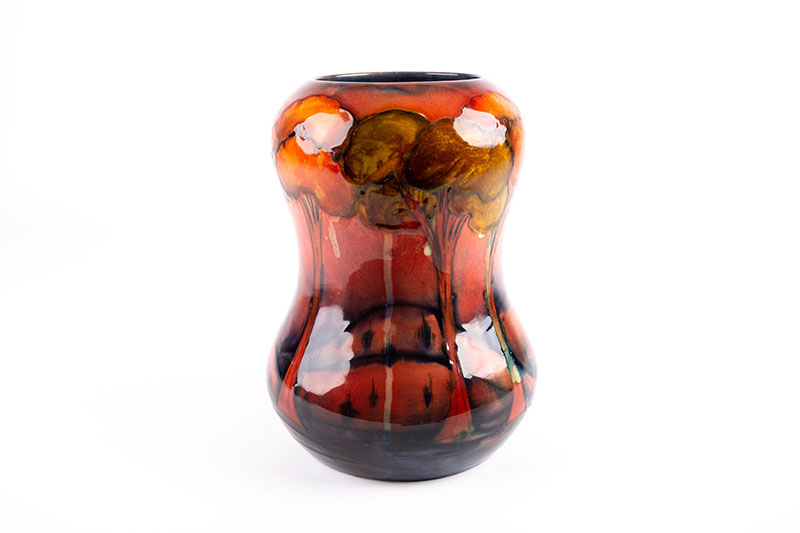Is Moorcroft Pottery valuable?
A look behind one of the 20th century leading British potters
05/04/2024
Moorcroft was one of the leading British potters of the 20th century, celebrated for their vibrant and timeless wares that epitomised the organic aesthetic of the Art Nouveau era, their creations continue to be highly desired by collectors.
A Moorcroft piece will undoubtably have a value, but how much value will depend on several factors, including the age of the work, the pattern, the size, the shape, the type of glaze, the colours used, the quality of execution, rarity, and the condition. Early examples are often more valuable, while certain patterns attract higher values such as the Pomegranate design. The value of a Moorcroft piece is not directly correlated to the how large it is, in fact, some miniature examples have achieved more than their full-sized counterparts. As trends fluctuate, so do tastes, and we highly recommend seeking the guidance of an expert valuer when it comes to finalising a valuation.
William Moorcroft set up his factory at Sandbach Road in Cobridge, Stoke-on-Trent in 1912, having already made a name for himself with his Florian wares, which he produced during his employment at pottery manufacturers James Macintyre & Co. Over the next two decades his reputation and portfolio would continue to grow, leading to Moorcroft receiving a royal warrant in 1928. He worked closely with Liberty & Co. supplying wares which would often be mounted with silver finishings. William also supplied Harrods and Tiffany & Co. which supported his global expansion. Some of his most celebrated designs include Poppy, Hazeldene landscapes, Claremont with toadstool motif, Tudor Rose, Pomegranate, Wisteria, Spanish, Pansy, Moonlight Blue, Eventide, Dawn as well as his monochromatic Flamminian wares.
A rare and unusual William Moorcroft flambé vase
In 1945 William Moorcroft suffered a stroke and passed away. His son Walter Moorcroft was serving in the intelligence corps at the time. Walter returned to run the factory, creating a series of new designs which were launched towards the end of the decade. Walter’s wares became very popular and included Orchid, Spring Flowers, Pansy, Anemone, Hibiscus, Clematis and African Lily to name a few. Before his retirement in the late 1980s, Walter designed five limited editions, Pineapple Plant, Chestnut, Tulip, Maize, and Wild Arum.

William Moorcroft for James MacIntyre, a miniature 'Lilac' conical vase,
Moorcroft pottery continues to produce wares from the original brick factory in Stoke-on-Trent, while modern wares are popular amongst enthusiasts, the most coveted pieces are those designed by William and Walter. Indeed, works produced by William during his time with James Macintyre & Co. and in the early 20th century are highly desirable.
The rarer and more unusual examples tend to attract the most competition at auction. Admired by enthusiasts throughout the world, Moorcroft pottery will continue to be valuable, and while trends and prices will fluctuate, these works of art remain beautiful reminders of a bygone era.
Read more
How to Value Moorcroft Pottery?
How to Identify Antique Pottery
Do you have any Moorcroft pottery that you are considering selling?
With a huge global audience of potential buyers, Dawsons can achieve the best prices at auction.
Get in touch with an expert valuer for confidential sales advice today, we would be delighted to help:

